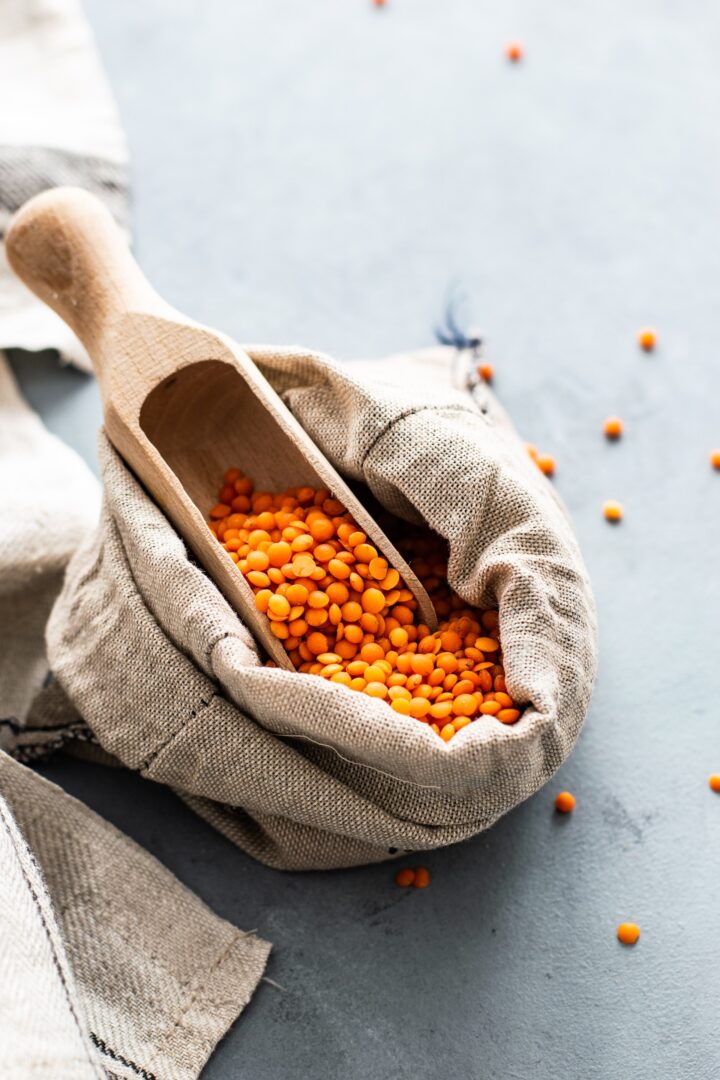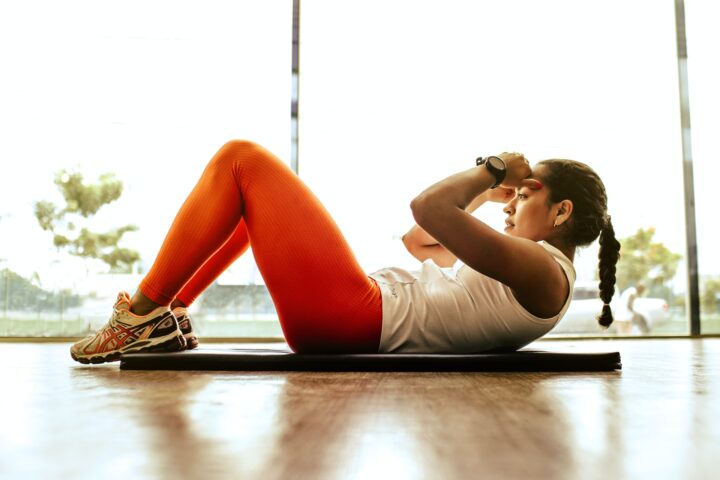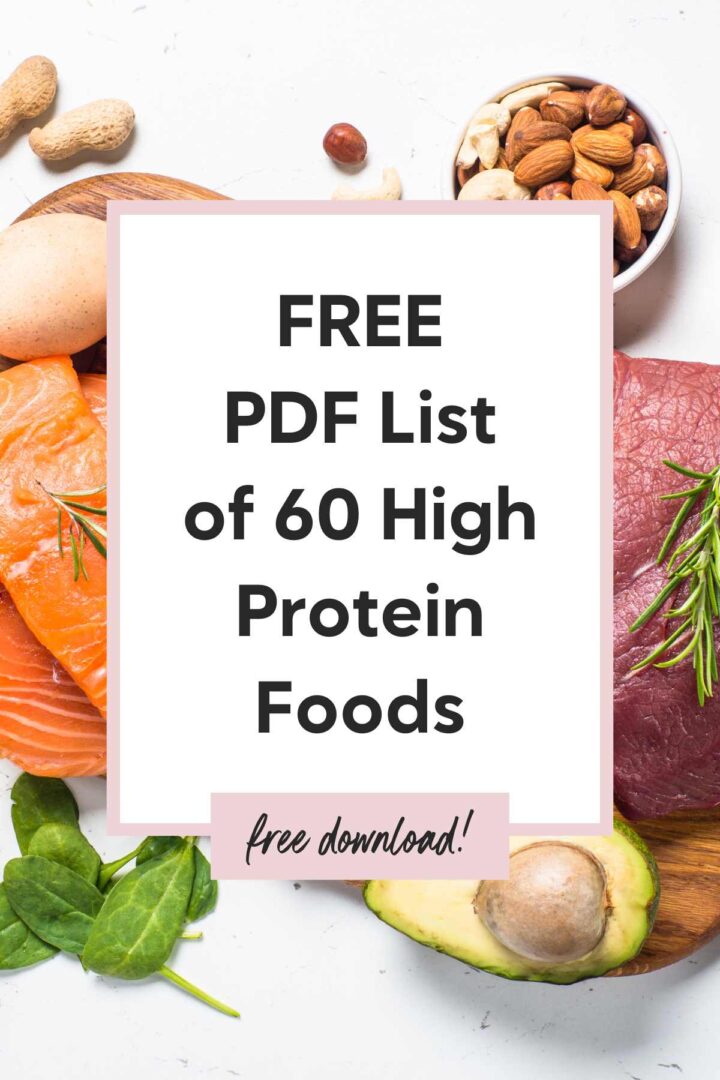Printable List of 60 High Protein Foods (FREE Download)
Eating more protein is an awesome goal for your health and appetite.
That’s why I made this FREE printable list of high protein foods… so you can finally learn how to eat more of this important nutrient.
But as a Registered Dietitian, I know protein can feel hard. Everyone’s pushing protein, there’s so much misinformation about it, and eating enough feels impossible.
Good news: we’re tackling all these challenges and more in this detailed post about high protein foods. You’ll learn what protein is, why it matters, and exactly how much protein you need to eat.
And I included an extensive list of 60 high protein foods so you’ll never second-guess what to eat to get more protein again.

What is protein?
Have you ever heard of macronutrients?
These are nutrients we need in large amounts. And unlike micronutrients, macronutrients provide our bodies with energy in the form of calories. They’re our fuel!
Protein is one of 3 macronutrients: protein, carbohydrates, and fats.
Protein is unique because it’s made up of building blocks called amino acids.
When you eat protein-rich foods, they’re broken down into these amino acids. And your body shuttles them off to various tissues and cells throughout the body to be used in different ways.
Why is protein important?
Protein plays many important roles in our body.
Of course, protein helps us grow and maintain muscle mass.
It’s also a very satiating macronutrient; that means when you eat high-protein meals, you’ll feel more full for longer. This can help make weight loss easier and reduce cravings.
Protein is also critical in wound healing and tissue growth. And did you know it’s essential for healthy cells and metabolism? Proteins make up the structure of many enzymes, hormones, and immune cells to keep us feeling healthy year-round.
It’s a mighty macronutrient! To say we should eat more protein is an understatement.
How much protein should you eat?
Weirdly, this question is kind of controversial!
Many people claim that 0.8 grams of protein per kilogram of body weight per day is enough. But it’s not. This recommendation is based on the recommended dietary allowance or the RDA. It’s not only outdated, it’s meant to be more of a minimum to prevent disease.
Instead, try to this:
- 0.7-0.9 grams of protein / lb / day (or 1.4-2 grams / kg)
- OR 30-40 grams of protein per meal to simplify things
If you weighed 150 lbs, you would want to eat 105-135 grams of protein each day.
These recommendations come from the International Society of Sports Nutrition (ISSN), so they’ll be relevant for most people who exercise.
What factors impact protein needs?
Protein needs are unique to you and depend on many different factors:
- Age
- Sex
- Height
- Weight
- Activity level
- Activity type
- Health goals
- Health status
- Dietary restrictions
- Environmental factors
With all this in mind, remember that protein recommendations are just that–recommendations! Use them as a starting point and adjust as needed.

What foods contain protein?
Most foods contain some protein. But not every food is high in protein.
The most protein-rich foods include:
- Meat and poultry
- Fish and seafood
- Eggs
- Dairy
- Soy products
- Beans and lentils
- Nuts and seeds
List of 60 high protein foods
Scroll down for a full list of 60 high-protein foods.
>>> Or download the full (and FREE!) list of 60 protein-rich foods here.
You’ll notice I included calorie information too. That’s because it can help us better understand and compare foods… not because I want you to obsess over numbers.
For example, 100 grams of cooked chicken breast contains 32 grams of protein for 158 calories. To get that same amount of protein from pumpkin seeds, you’d need to eat 600 calories-worth! Regardless of your goals, it can be good to know.
The nutritional information from these foods was sourced from FoodData Central from the US Department of Agriculture.
High protein meat
| Food | Portion | Calories | Protein (grams) |
| Chicken breast, skinless, cooked | 100 grams | 158 | 32 |
| Chicken thigh, skinless, raw | 100 grams | 144 | 19 |
| Lean ground chicken, cooked | 100 grams | 189 | 23 |
| Canned chicken, drained | 100 grams | 185 | 25 |
| Turkey breast, cooked | 100 grams | 147 | 30 |
| Lean ground turkey, cooked | 100 grams | 213 | 27 |
| Turkey bacon, cooked | 3 slices | 90 | 8 |
| Turkey, deli meat | 100 grams | 109 | 22 |
| Turkey sausage, cooked | 100 grams | 196 | 24 |
| Beef, t-bone steak, trimmed | 100 grams | 212 | 27 |
| Beef tenderloin, cooked | 100 grams | 168 | 28 |
| Lean ground beef, raw | 100 grams | 185 | 18 |
| Pork tenderloin, raw | 100 grams | 119 | 22 |
| Pork chops, cooked | 100 grams | 202 | 25 |
| Ground pork | 100 grams | 346 | 19 |
| Pork sausage, cooked | 100 grams | 317 | 18 |
| Ham, deli meat | 100 grams | 101 | 17 |
High protein fish and seafood
| Food | Portion | Calories | Protein (grams) |
| Shrimp, cooked | 100 grams | 99 | 24 |
| Canned tuna, drained | 1 can | 121 | 27 |
| Salmon, farmed, cooked | 100 grams | 206 | 22 |
| Canned salmon, bone-in | ½ large can | 260 | 40 |
| Smoked salmon | 100 grams | 117 | 18 |
| Sardines, canned and drained | 1 can | 191 | 23 |
| Cod, cooked | 100 grams | 84 | 20 |
| Halibut, cooked | 100 grams | 239 | 18 |
| Tilapia, cooked | 100 grams | 128 | 26 |
| Fish sticks, frozen | 100 grams | 277 | 11 |
High protein dairy and eggs
| Food | Portion | Calories | Protein (grams) |
| Greek yogurt, plain, nonfat | 1 container (156 grams) | 95 | 16 |
| Greek yogurt, plain, whole milk | 100 grams | 95 | 9 |
| Yogurt, plain, nonfat | 100 grams | 50 | 4 |
| Milk, 2% | 1 cup | 122 | 8 |
| Cottage cheese, 2% | 1 cup | 180 | 24 |
| Cheddar | 50 grams | 205 | 12 |
| Gouda | 50 grams | 178 | 13 |
| Mozzarella, partskim | 50 grams | 148 | 12 |
| Parmesan, grated | 2 tbsp | 64 | 5 |
| Ricotta, whole milk | 100 grams | 158 | 8 |
| Eggs, whole | 2 eggs | 144 | 12 |
| Egg whites | ½ cup | 63 | 13 |
| Whey protein powder | ⅓ cup | 113 | 25 |
High protein plant foods
| Food | Portion | Calories | Protein (grams) |
| Tofu, extra firm | 100 grams | 55 | 7 |
| Soy milk, unsweetened | 200 grams | 76 | 7 |
| Edamame | 1 cup | 188 | 18 |
| Textured vegetable protein, dry | 1 cup | 249 | 35 |
| Seitan | 100 grams | 107 | 18 |
| Chickpeas, cooked | 1 cup | 269 | 15 |
| Black beans, cooked | 1 cup | 240 | 15 |
| Kidney beans, cooked | 1 cup | 225 | 15 |
| Navy beans, cooked | 1 cup | 255 | 15 |
| Lentils, cooked | 1 cup | 226 | 18 |
| Almonds, dry roasted | ½ cup | 450 | 14 |
| Pistachios, dry roasted | 1 oz | 161 | 6 |
| Cashews, dry roasted | 1 oz | 163 | 4 |
| Peanuts, dry roasted | 1 oz | 166 | 7 |
| Peanut butter | 2 tbsp | 191 | 7 |
| Powdered peanut butter | 13 grams | 60 | 6 |
| Almond butter | 2 tbsp | 196 | 7 |
| Pumpkin seeds, raw | 50 grams | 278 | 15 |
| Hemp seeds | 3 tbsp | 166 | 9 |
| Quinoa, cooked | 1 cup | 222 | 8 |
12 Dietitian tips to eat more protein
Eating more protein can feel hard. But it doesn’t have to be!
Try these simple tips to get more protein in your diet:
- Stock your freezer. Keep your freezer filled with easy proteins like frozen edamame, frozen salmon, and even chicken nuggets.
- Double-up on protein. Especially if you don’t eat meat! Combine multiple protein sources at meals like beans and tofu, or quinoa and cheese.
- Prioritize no-prep proteins. The worst part of protein is the prep! Stock your house with canned tuna, cheese sticks, roasted chickpeas, or other easy options.
- Add protein to breakfast. Protein gets harder as the day goes on and life gets busy. Start your day with a high-protein breakfast like this chia pudding!
- Keep a list. It’s easy to forget what foods contain protein. Keep a list of your favorite protein sources in the notes on your phone.
- Try protein powder or shakes. Sometimes you need a little boost! There’s nothing wrong with protein shakes and powders if you enjoy them.
- Try high protein smoothies. Smoothies might be the easiest way to load up on protein and nutrition. Try one of these protein-rich smoothie recipes.
- Serve more protein. Usually serve 3 ounces of chicken at lunch? Try 5! Eat 1 egg at a time? Try 2! Simply increasing protein portions can make all the difference.
- Choose high protein carbs. Whole grains and beans are awesome carbs that also offer a boost of protein. Choose these over more refined carbs often.
- Aim for 30 or more grams per meal. It’s harder to get protein at snacktime. Make sure your meals have enough to take the pressure off your snacks.
- Choose lower fat proteins. The less fat, the more protein! Choose leaner proteins when possible and add healthy fats in other ways.
- Make it taste good. Protein foods can be bland. Dress them up with sauces, seasonings and toppings so you actually enjoy eating them.
Printable list of 60 high protein foods

>>> Click here to download your FREE printable PDF list of high protein foods.
This document is totally free! And it contains all the foods and values listed in this article.
Print a copy and keep it handy when you’re building your next grocery list!
Final thoughts
Protein is important for your health, appetite, and metabolism.
But eating enough can feel challenging, to say the least!
Bookmark this article so you can remember what protein is, why it matters, and how much you should eat.
And don’t forget to download the free printable PDF of 60 high protein foods so you can eat more protein with ease.


Very informative! Will definitely download the article.
Your information was very helpful. My doctor put me on a high protein dieit
Would love the protein list please. My doctor told me to try protein eating. Thank you.
Hi I’m Helen from Cape Town
My husband had a double bypass 2 months ago and every day we take his blood pressure. I’ve realized I have not been giving him enough protein. Your site has been an eye opener for me and I have worked out that he requires approx 76 gr if protein per day. He weighs 95 kg x o.8 gr protein – does that sound ok?
Hi Helen! Thank you so much for your comment and for reading! Unfortunately, I’m not able to provide any individualized protein recommendations without knowing someone’s full medical history — I’d highly recommend connecting with a Registered Dietitian in your area to get any tailored recommendations. All the best to you and your husband!
Very informative and will definitely try to follow your ideas. Thanks
Do you have this list in US measurements?
Wonderful! wonderful! and once again, Wonderful!
Shakespeare
Thank you for all of the info on foods with the highest content of protein. A concise list as provided is so helpful. I was just diagnosed with cancer of the pancreas and liver and was told I should eat as much protein as possible, so this list will be very helpful. Thanks again.
Thank you your list really helps
Thank you!
I have reasonable health.
I will be 80 years old 11-24-2024.
I need all information to stay well.
Stevphen Richard Lahey
Thanks. Excellent article.
Suggest you do one for older old people.
Nancy, retired public health nutritionist
LOVE this article!!! I study everything about Nutrition as much as possible; it is SO important ! Thank you for sharing this one ! 😊 ❤️ LinLivingston
I live with Parkinson’s disease, I’ve been told protein is not good for me because it effects the medication to the point it will not be as effective as it should be. And I agree because I have felt the difference.
I love meats and veg. plus dairy products, but I’m destroying the med’s., that give me freedom of movement. I’m torn between eating happy and happy movement.
Suggestions please.
Phil.